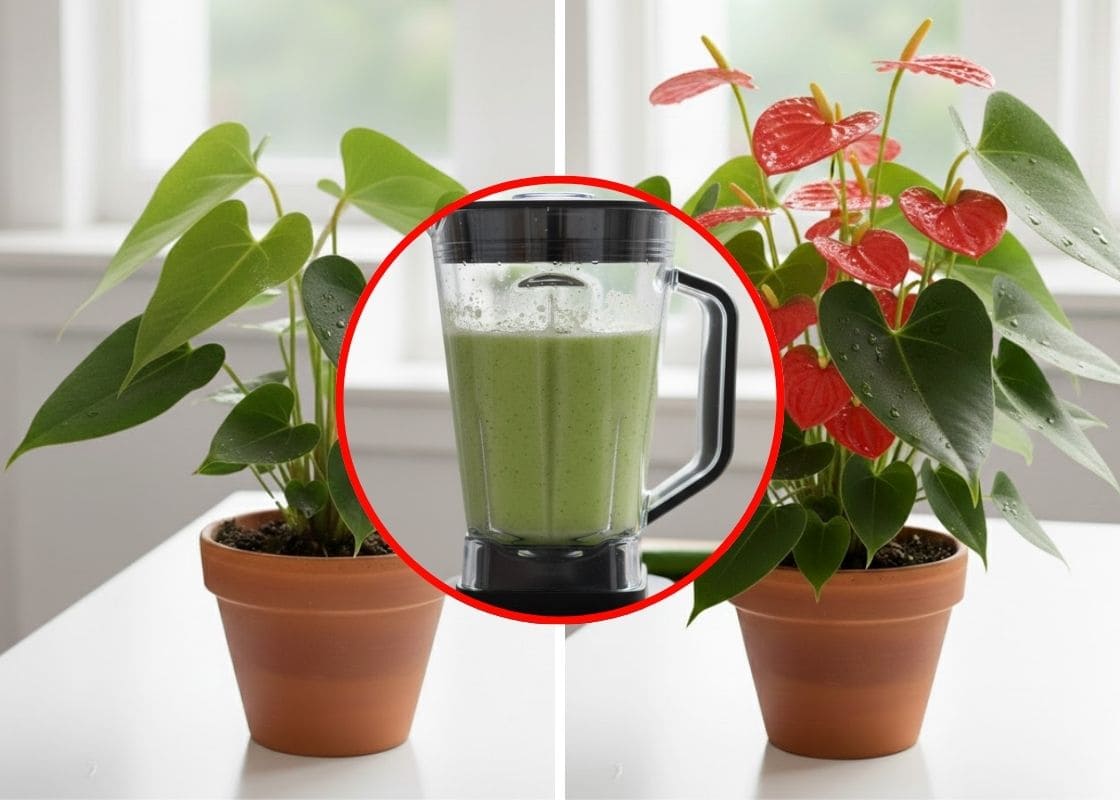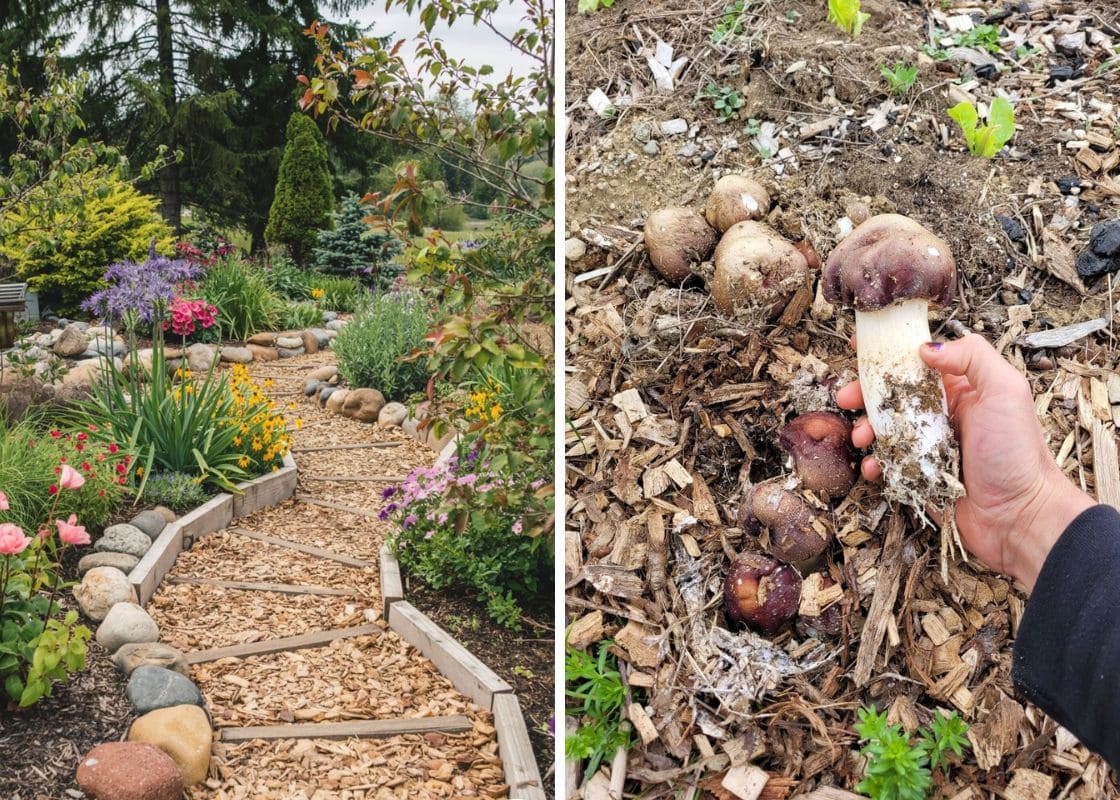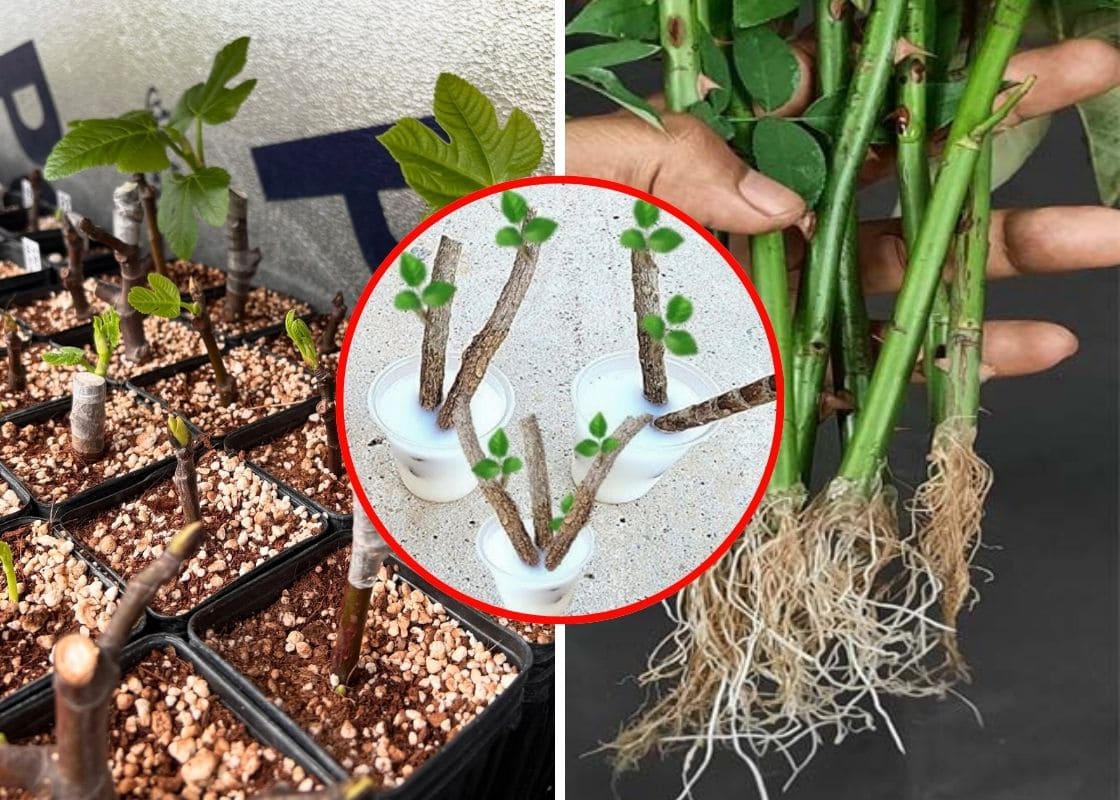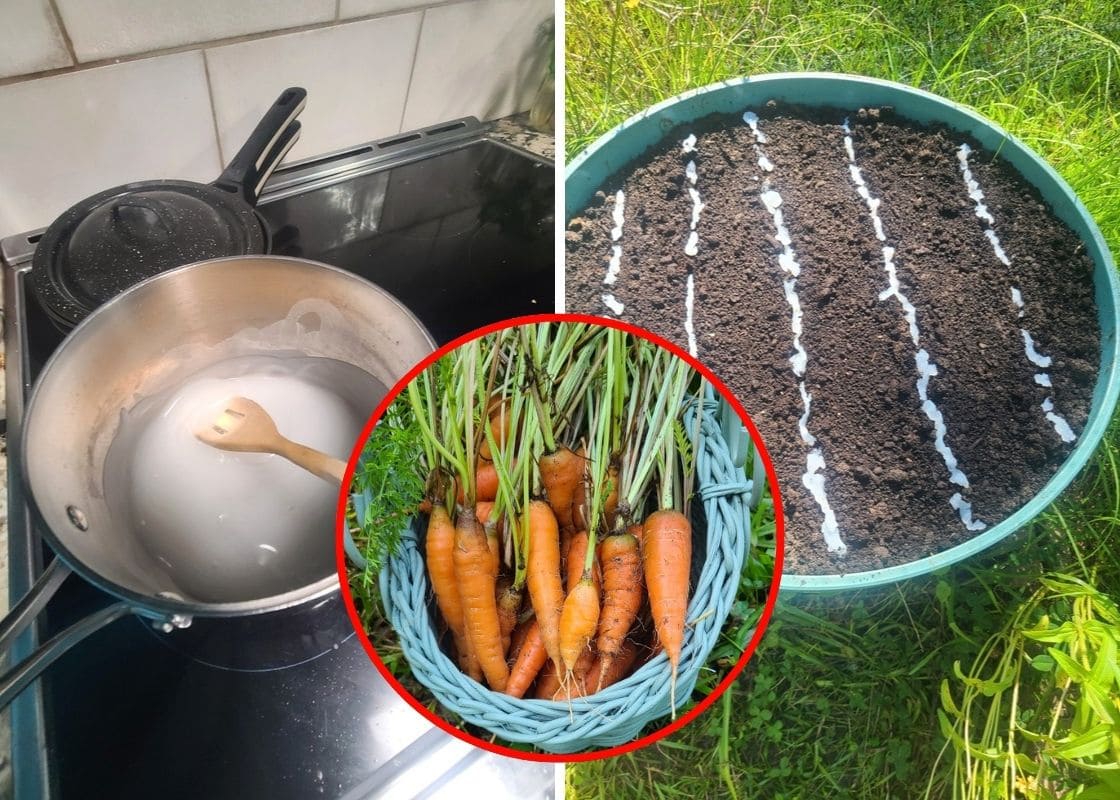Have you ever wished your garden could practically take care of itself? That’s what keyhole gardening is all about, a simple, low-maintenance, and sustainable way to grow your own vegetables and herbs.
Originating from water-scarce regions, this gardening technique is designed to maximize productivity while minimizing resource use.
If you’re interested in starting a garden that thrives with minimal effort, let’s dive into the world of keyhole gardening together!
What is a Keyhole Garden?
A keyhole garden is a raised garden bed shaped like a circle, with a small “keyhole” cutout allowing easy access to the center.
In the middle of this circular garden is a compost basket, where you toss kitchen scraps and organic material. Over time, these scraps break down and nourish the surrounding soil, providing steady nutrition to your plants.
The compost basket also doubles as a watering channel, letting nutrients and moisture flow out naturally into the soil.
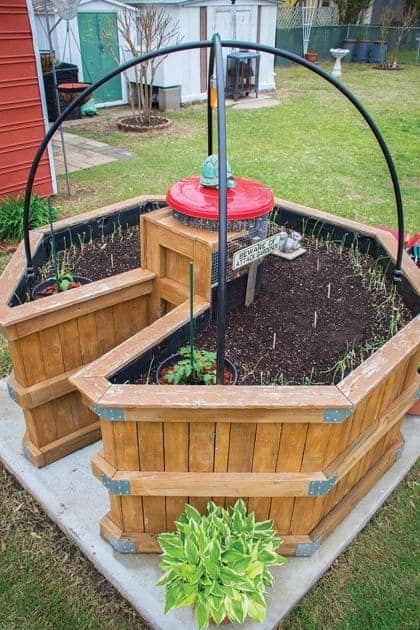
Why Build a Keyhole Garden?
1. Efficient Water Use
Instead of drenching the entire bed, you can pour water into the compost basket. The moisture spreads out to the roots naturally, reducing water waste and keeping the soil consistently damp.
This makes keyhole gardens a great choice if you’re in a dry climate or looking to conserve water.
2. Nutrient-Rich Soil Without Extra Fertilizers
With a keyhole garden, the compost basket also acts like a slow-release fertilizer. You’re feeding your plants simply by adding kitchen scraps and yard waste to the center.
Over time, these materials break down, releasing nutrients into the surrounding soil and keeping your plants well-fed.
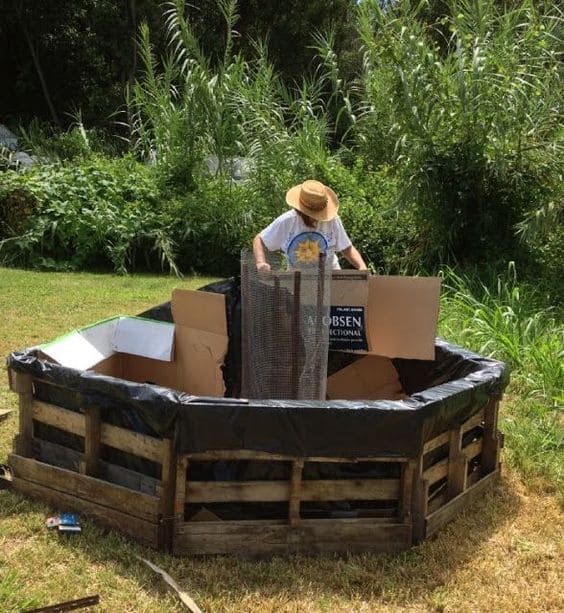
3. Easy Access and Space Efficiency
The “keyhole” cutout means you can easily reach any part of the garden without compacting the soil by walking on it.
This circular shape also allows for dense planting, so you can grow a variety of plants in a small space.
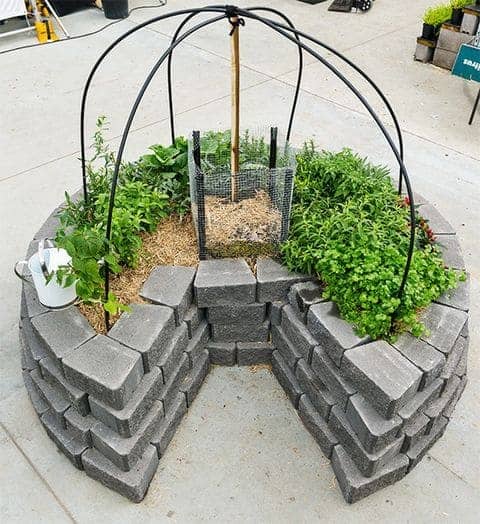
4. Environmentally Friendly
Using waste materials as compost not only saves you money, but it also reduces waste. You’re essentially creating a small ecosystem that recycles nutrients and conserves resources.
How to Build a Keyhole Garden
Step 1: Choose the Perfect Spot
Keyhole gardens work best in full sun, so you should try to choose an area that gets at least 6-8 hours of sunlight daily.
Step 2. Gather Materials
Here’s what you’ll need:
- Bricks, stones, or wood
- Compost basket container
- Cardboard or newspaper
- Compost, soil, and organic matter
Step 3: Build the Outer Wall and Compost Basket
You start by laying out your materials in a circular shape, roughly 6-8 feet in diameter, and leave a small “keyhole” cutout for access.
Next, you can stack the bricks, stones, or wood about 2-3 feet high to create the garden wall, then place the compost basket in the middle of the circle.
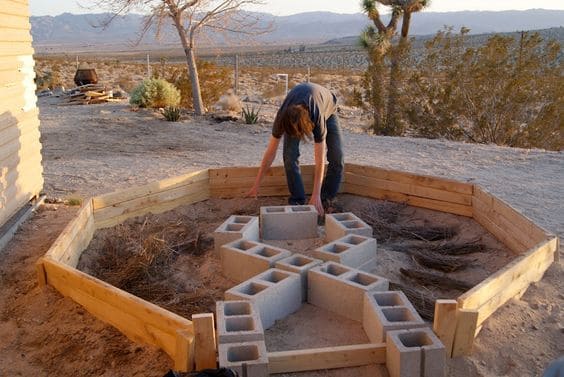
Step 4: Layer the Soil Like a Lasagna
Now it’s time to fill your garden bed. You’ll need to create layers that provide nutrients and drainage:
- Bottom layer: You add a layer of cardboard or newspaper to suppress weeds. Over time, this will break down and add organic matter to the soil.
- Middle layer: Fill with sticks, straw, or rough compost material to aid drainage and improve soil structure.
- Top layer: You can add compost or manure, then finish with garden soil for planting.
Finally, you should a a layer of mulch, like straw or grass clippings, to retain moisture and keep weeds down.
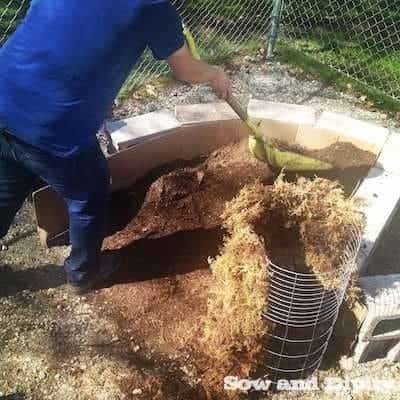
Choosing Plants for a Keyhole Garden
Tomatoes, carrots, lettuce, peppers, and leafy greens are ideal plants in keyhole gardens. Besides, you can consider planting herbs like basil or chives to help deter pests and create a balanced ecosystem.
For year-round productivity, you grow cool-season veggies like kale and spinach in the spring, then switch to warm-season crops like peppers and tomatoes as temperatures rise.
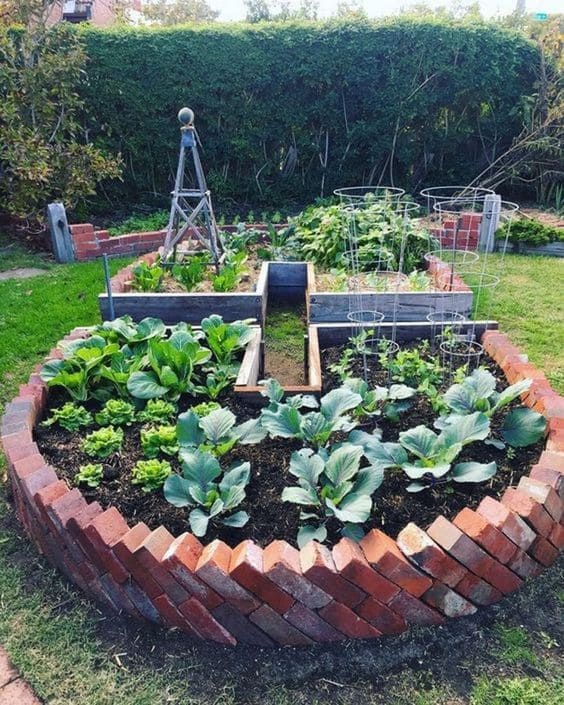
Tips for Maintaining a Keyhole Garden
Regularly Add Compost
You should keep adding kitchen scraps, leaves, and other organic materials to the central compost basket to ensure a steady supply of nutrients.
If the compost starts looking dry, give it a little water to help it break down faster.
Mulch to Retain Moisture
You can add mulch regularly to the top layer to help retain moisture and keeps weeds under control.
Straw, shredded leaves, or even grass clippings work well and slowly break down to add organic matter to the soil.
Organic Pest Control and Weeding
With the natural balance that a keyhole garden creates, pests are usually less of a problem. Companion plants like marigolds help deter bugs, and regular mulch application keeps weeds at bay.
If weeds do appear, they’re easy to pull since you’re not compacting the soil by walking on it.


